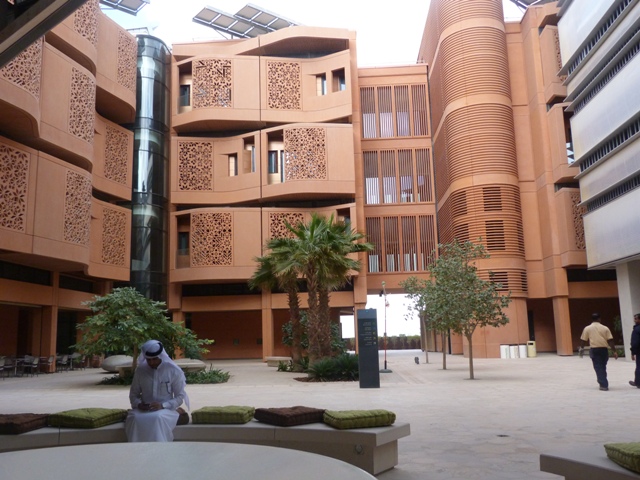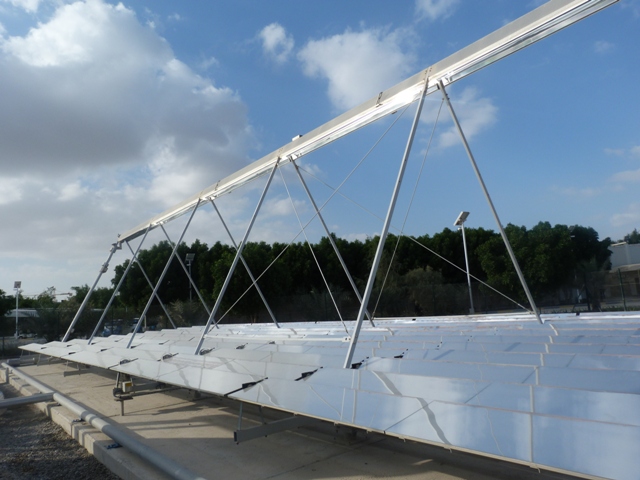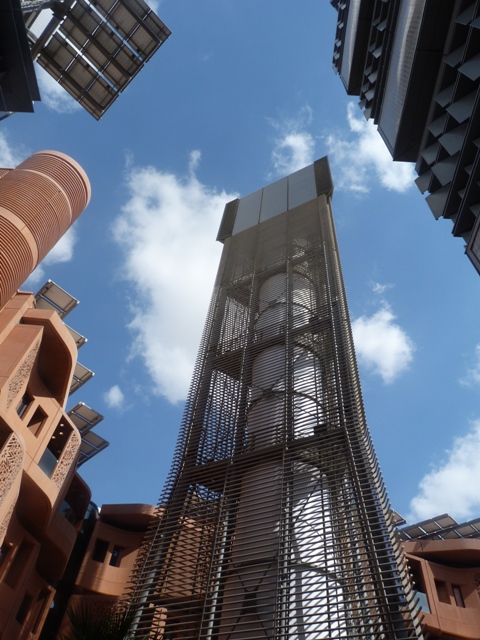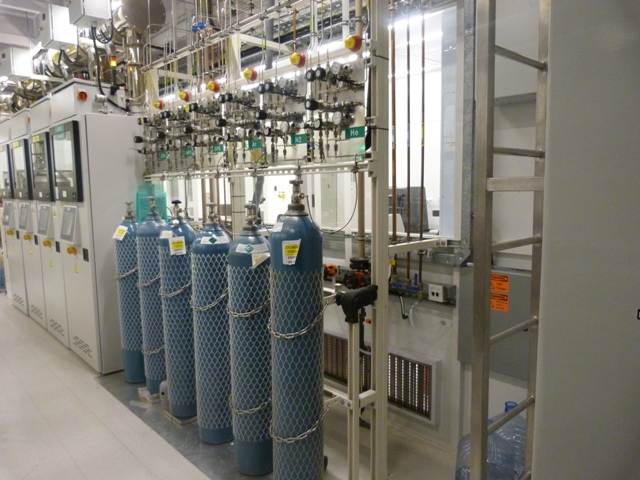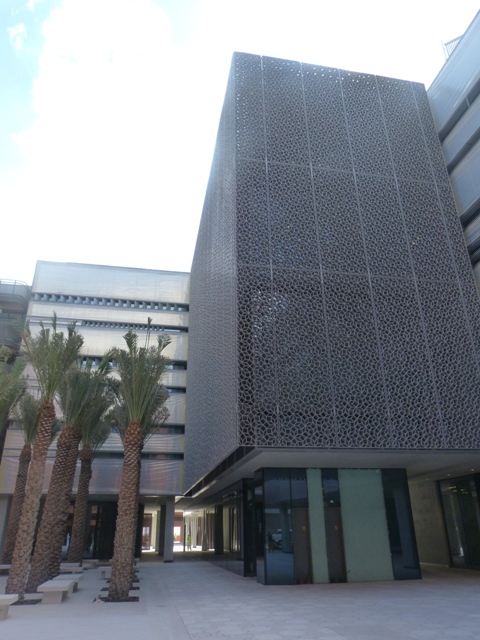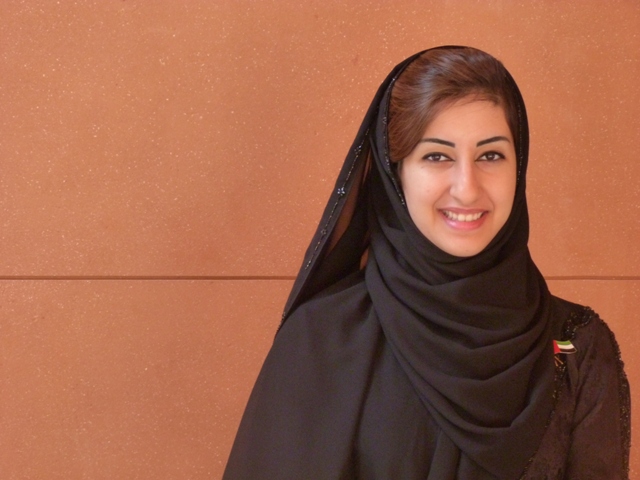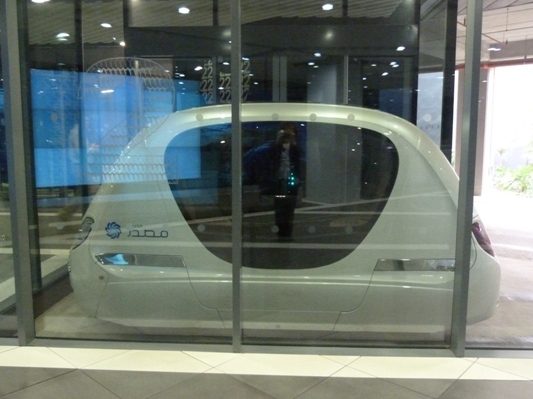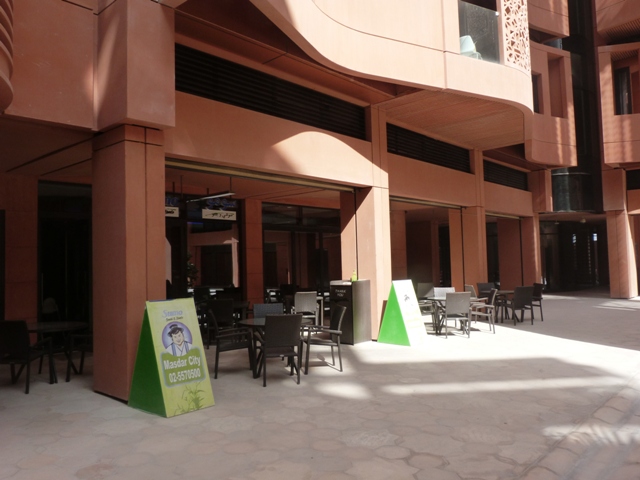A climate-friendly future? Impressions of Masdar City
Today I paid a visit to Masdar City 17km from the centre of Abu Dhabi, set up in 2006 with the aim of being “one of the most sustainable cities in the world”, according to Masdar. Masdar was set up as a commercially driven renewable energy company and a strategic government initiative. The city is powered entirely by renewable energy and the buildings are designed to maximize energy efficiency.
This is an impression of the iconic architecture of Masdar around a pleasantly cool courtyard. (The modest gentleman on the couch is Sultan Aal Ali, in charge of Masdar’s development).
In the years since the vision of a sustainable, purpose-built city at the heart of a desert state was first launched, a lot of the enthusiasm seemed to have gone out of the project, at least in the view of a lot of media. That is one reason why I was keen to have a look at what is happening there today. I will be writing an article for our website on this in the next couple of weeks, so for today I’d just like to share some pictures, thoughts and impressions with you.
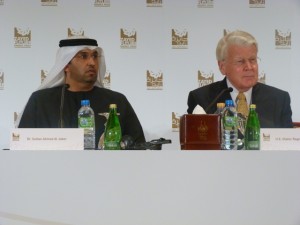
Dr. Sultan Ahmed Al Jaber, Director General of the Zayed Future Energy Prize with President Grimsson
Incidentally, as part of the World Future Energy Summit and at the ceremony announcing the 2013 Zayed Future Energy Prize here last night, the ICE connection was brought up again by the President of Iceland, Olafur Ragran Grimsson.
He was chairman of the prize jury and was talking about those connections between the record melt of the Arctic ice and the push for renewables here in the oil-rich Gulf region. Yes! The message seems to have arrived on the global stage.
Anyway, to Masdar City:
Using the sun to cool Masdar. Normally, air-conditioning would be one of the highest electricity-guzzlers and emissions producers. The architecture uses window-to-wall ratio, insulating building materials, shading and other means to keep buildings cool – and uses sun power to do the rest.
A modern version of a cooling wind-tower, to bring cold air to the courtyard. These towers have a long tradition in the region. They look great as well.
Hi-tech lab for nano-technology research at the Masdar Institute. The city is developing around the university complex.
This is the centre-piece of the brand-new 2nd phase of the Masdar Institute. The city is a work in progress. Today I was one of the first journalists to be allowed into the new development without safety helmet and boots for construction site safety.
Beautiful places, beautiful people! One of my guides from Masdar’s communications department against the background of a wall constructed from desert sand. Thanks!!!
Driverless public transport, using magnetic technology. Felt a little like sci-fi, but definitely got us across the complex. Not sure if it will catch on, but it was quite an experience.
I could go on all night, but will save the rest for a later date. There is plenty of building work going on. The German company Siemens will soon be moving in to its new headquarters in Masdar. Other companies are also planning to move in. The International Renewable Energy Association IRENA will ultimately have its headquarters here.
So far, students are the only residents. Seems a bit extravagant, which is one of the criticisms levelled at the eco-city in the past. But from what I saw today, things seem to be finally moving forward. EU Commissioner Connie Hedegard, who also visited Masdar today, told me Masdar was “leading by example”. She’s very positive about what’s happening in the region in terms of the growing interest in renewables. There’s a long way to go, she says – but stresses that applies to all of us.
Still seats available at this Masdar café today.



